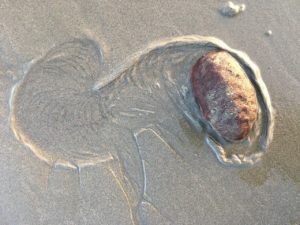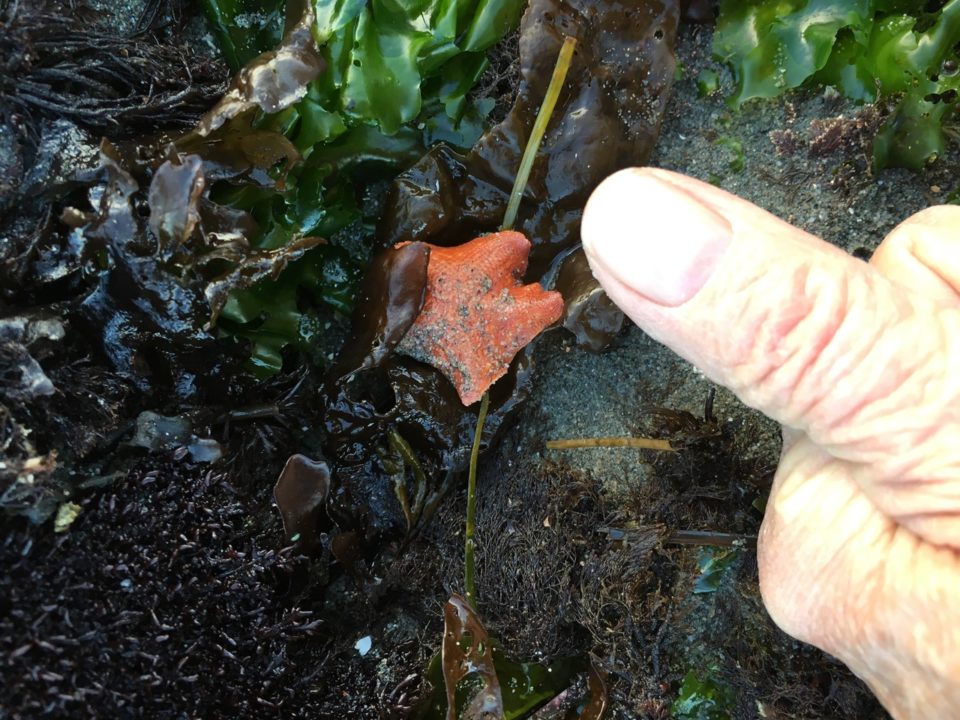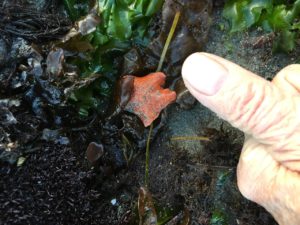Kathryn Arnold went tide pooling during a recent low tide. She wrote: “I had a couple of unique-to-me sightings at Shell Beach. The tide was an 0.7 and I spotted a healthy juvenile Bat Star about the size of my thumbnail resting on a seaweed-covered rock at the tideline."
“When I gently turned it over for a closer look, I discovered that is was dining on a wee Wentletrap!
"Don’t worry, I put the Bat Star and its prey back where I found them! A few moments later I came across a ten-inch long Gumboot Chiton tracing a beautiful serpentine design in the sand.”
 I didn't know about Wentletraps. I learned a Wentletrap was a tiny sea snail with a beautiful white spiral shell. The word “wentletrap” is Dutch for spiral staircase. Wentletraps are also called Staircase Shells or Ladder Shells. How, I wondered, did a Sea Star dine one of these seemingly well-protected mollusks.
I didn't know about Wentletraps. I learned a Wentletrap was a tiny sea snail with a beautiful white spiral shell. The word “wentletrap” is Dutch for spiral staircase. Wentletraps are also called Staircase Shells or Ladder Shells. How, I wondered, did a Sea Star dine one of these seemingly well-protected mollusks.
I learned that many Sea Stars eat Mussels and Clams, also well-protected by shells. Sea Stars surround the shell, as the little Bat Star did, and use the suckers on their feet to pull the shell apart, creating a tiny opening for them to reach their prey, using their stomach to do so. Mother Nature seems to have quite a creative streak.
Thanks to Kathryn for allowing me to share her photos with you here.


